December 2016
By Tom de Voil
Introduction
I recently had a brief article about HMAS Melbourne, the aircraft carrier, published and consequent on that I was asked to give this talk. It will be a brief history, some description of the ship with a few anecdotes thrown in. I see that I have also been asked to provide some comments on HMS Ark Royal.
Early History
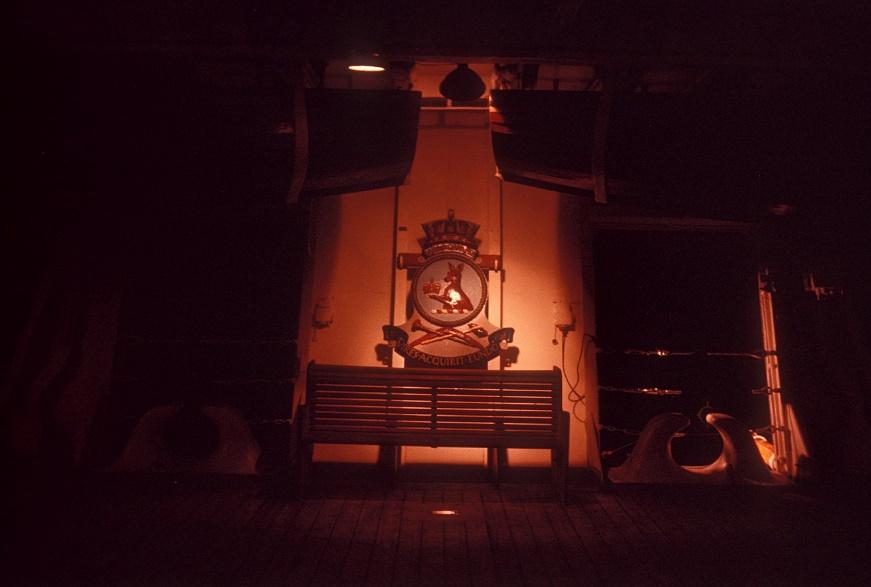
HMAS Melbourne was laid down during the Second WW at Vickers Armstrong in Barrow-in-Furness. She was launched in 1944, named Majestic, and was designed for service in the Arctic convoys as a light fleet carrier. Just under 700 ft long, beam 80 ft, 18,000 tons displacement. Design speed 25 knots. The war ended before her completion. I have here her “Machinery Information” handbook with a stamp: “Engineer Officer HMS Majestic” – pretty basic by today’s standards of documentation. She lay uncompleted for some time and, I guess, during the Korean War when HMAS Sydney was providing active air cover for military operations in Korea the ACNB decided to acquire her for Australia, updated with the most modern aviation facilities at the time.
HMAS Melbourne was commissioned into the RAN in 1955 eventually operating squadrons of Sea Venom jet fighters and Fairey Gannets – great hulking planes – for A/S work. At the time, whilst not being the largest aircraft carrier at sea, she was the most modern, I believe, incorporating for the first time, in one ship, three elements necessary for effective modern naval aviation at sea. These were:
- an angled flight deck
- a steam catapult and
- gyro stabilised landing mirrors
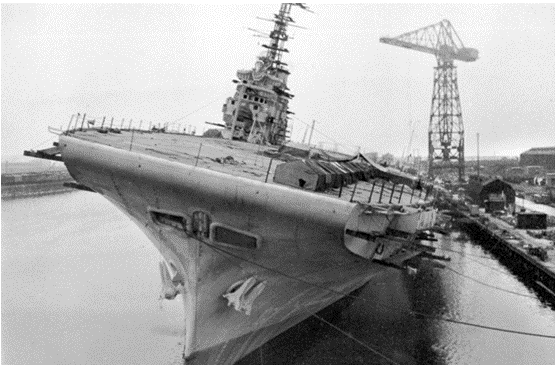
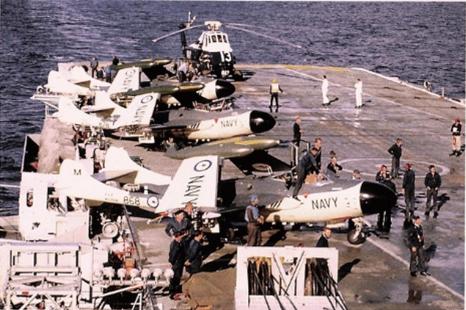
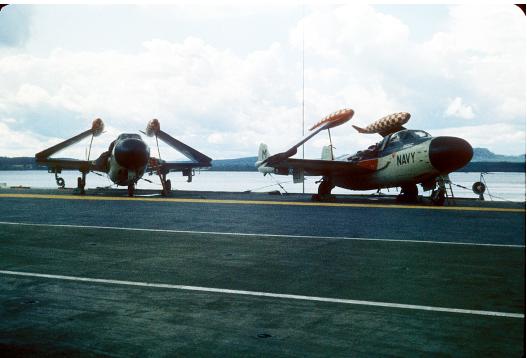
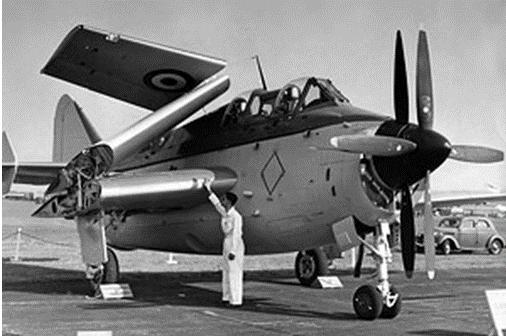
1963 – 1965
My first contact with HMAS Melbourne was in 1963 as a Direct Entry Engineering Officer when I was posted to her for 6 months to get my engineering watchkeeping certificates – boiler room and engine room w/k certs and so on. Although she was fairly newly commissioned her machinery was of war-time and pre- war vintage. All manually operated and enormous amounts of wild heat. Two shafts, but the starboard propeller had 4 blades and the port 3. She was a DC ship with 5 generators. Unlike most warships, for each shaft there was no separate boiler room and engine room but a Machinery Space (FMS and AMS) which housed 2 boilers, propulsion turbines, a turbo-generator, distilling plant and ancillary equipment. They were very noisy and hot. Air conditioning was almost non-existent and in the tropics my cabin on 4 deck was 93F at night and 96F during the day. Mess decks on 4 deck were similarly stinking hot.
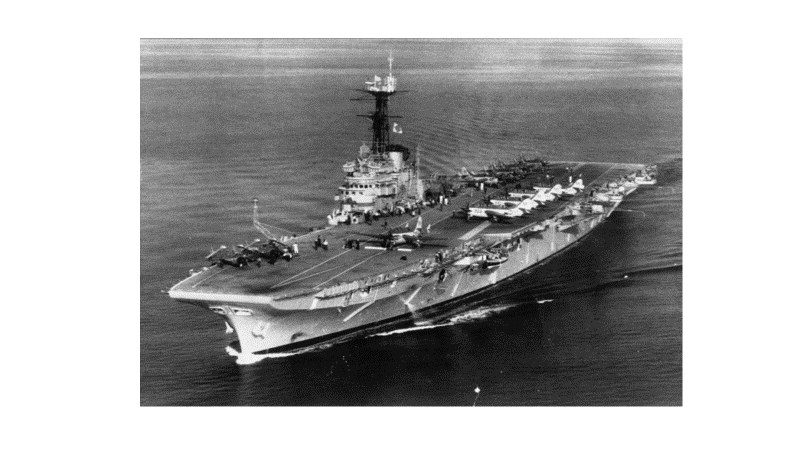
After a year’s posting away I re-joined HMAS Melbourne as a watchkeeping engineer for a year. There were about 12 Lieutenants in the Engineering department, a 2 1⁄2 who was the Senior Engineer and Commander E, the head of department. We all shared HQ2 as our working office space – from memory about 16 ft square. The bulkheads were lined with banks of sound powered phones – DC, fuel and liquid management, machinery compartments, etc, with numerous State Boards. There was a central console where whoever was in charge during DC evolutions sat and conducted the show. Against the inboard port bulkhead, in a small alcove, was Cdr E’s desk. Even though we all worked in the same cramped area one still almost needed an appointment to talk to him. He was God. Little did I know that 16 years later I would come back as God!

In HMAS Melbourne the marine engineering department not only looked after the traditional things but ME ratings also operated the catapult, arresting gear and bulk aviation fuel delivery to the flight deck. You will have seen in movies and news clips kids in bright coloured vests scuttling about under aircraft. They were my kids. At Flying Stations, the pressure of the forward boilers was increased from the normal 400 psi to 430 psi, to allow the catapult steam accumulators to be charged. This really tested the metal of the PO(ME) steaming as this was just below the set pressure for the safety valves. And on top of this anything might happen. There was nothing more attention grabbing during the Middle Watch when you were trying to remain attentive than to get a FULL ASTERN, as happened to me when a Gannet lost power on launch.
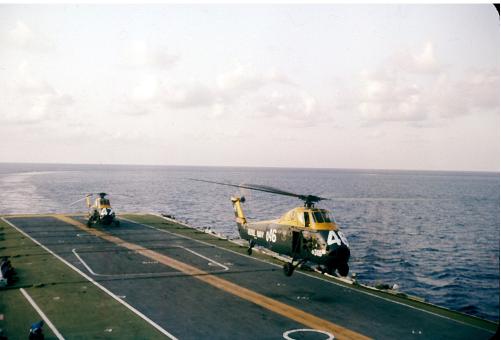
During this period in the Far East (1965) we embarked an RN Squadron of Wessex A/S helos. These had dunking sonar and it was a trial to see how they went, I believe. The RAN subsequently acquired its own Wessex. I managed to hitch a ride on one sortie but this was not too successful since the Auto Hover controls insisted in making the helo dive downward, and at 60 ft this was not very comforting. I have it in my memory that a Skyhawk jet made a touch and go but I am not sure. All very exciting for a young lad.
1968
My next contact with the ship was when I joined Garden Island Dockyard towards the end of 1968. I was promptly put in charge of the dockyard’s set-to-work team at the completion of Melbourne‘s modernisation carried out that year. A bit of a disappointment since I thought I would escape steam for a couple of years.

The modernisation was built around being able to operate A4 Skyhawk jet fighters and Grumman Tracker A/s aircraft, together with Sea King helos. The catapult and arresting gear were upgraded, storage for 70,000 gallons of AVGAS, 133,350 gallons of AVCAT, new avionics, communications and electronics, a turbo alternator and a diesel alternator for AC power, TV through the mess decks, improved air conditioning, LOX, new electric engine telegraphs – these were the main changes. Displacement now 20,000 tons.
Unfortunately, while I was still at GID the collision with USS EVANS occurred and I saw her steam up the harbour to Cockatoo Island where the bow was repaired. But the poor ship seemed never far from problems. While she was alongside at the Fitting Out Wharf I saw, personally, a freighter coming out of Woolloomooloo Bay collide with her port aft sponson and a Sydney Harbour ferry ran straight into her stern whilst she was at a buoy on the Rose Bay side of GI. Neither her fault! Then, in the mid-70s (David Martin was CO) her LWO2 radar antenna fell over the side whilst she was crossing the Tasman Sea.
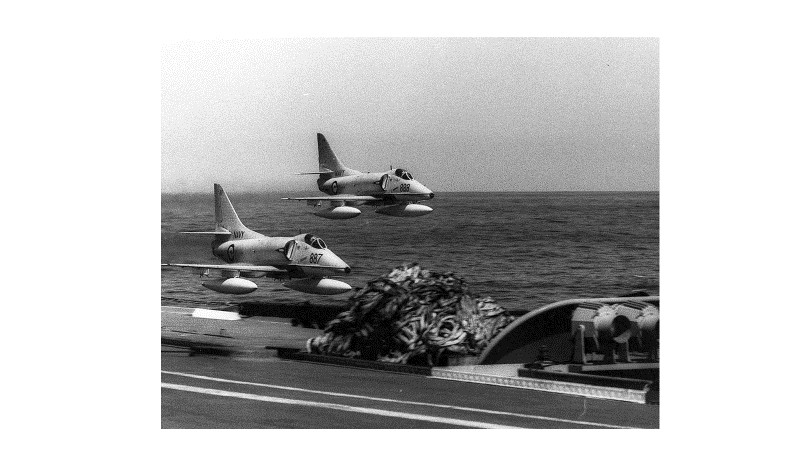
Nevertheless, she gave sterling service until the 80s. Habitability was always a problem and, in an attempt to fast track accommodation and habitability improvements a “HABITABILITY FUND” was set up, outside the normal, cumbersome A&A procedures, administered by the ship and the Fleet Commander.
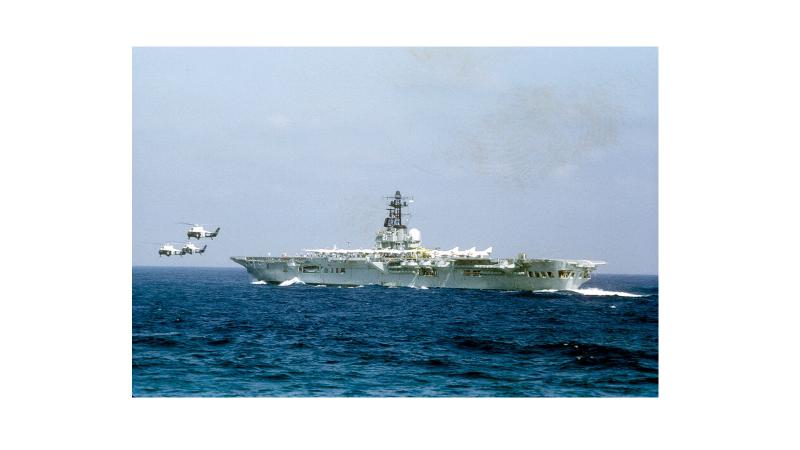
1981
I was appointed MEO in April 1981 and renewed my acquaintance with her. Time had not mellowed her. I was now God! One thing I learned as MEO – it was 103 vertical steps from the Control Platform in the FMS to the Bridge, which I traversed many times to report Main Engines to the CO. In the time it took to make that journey I always wondered if the machinery state was still the same when I arrived on the bridge as it was when I departed the FMS!
That was quite a busy year for her. We deployed to the FE again, worked around the EA Exercise areas and participated in Exercise K 81 off Shoalwater Bay in Queensland. As we left Fremantle bound for Manila in company with USS Coral Sea and a US TF, my catapult engineer suffered a medical problem and we ceased flying, until we arrived in Manila where a previous catapult engineer met us, having been pulled out of his own ship. Why does an aircraft carrier go to sea? Not many brownie points for that effort. Did you know that there was never a handbook for the catapult – a very complex system and all we had to go on was a note book and sketches made by a previous EO (Mark Russe ll). My favourite time was to be on deck at the Howdah when we were operating Trackers at night. Red, yellow and orange flames, carbon, etc. spewed into the night sky as the engines revved up.
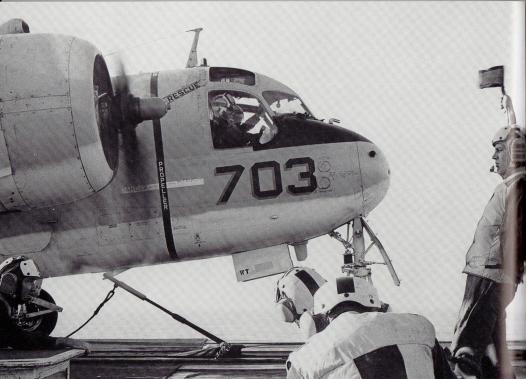

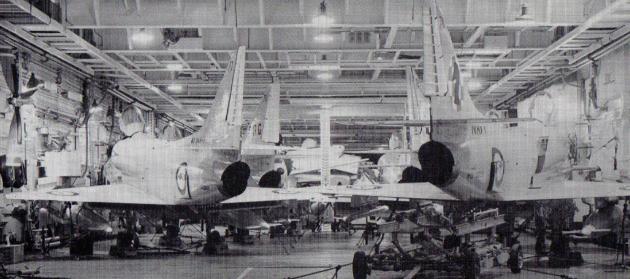 We survived that deployment and all the other sea time that we did, except one incident sticks in my mind. I mentioned previously that two alternators were added to the ship in 1968 to provide power for electronic and communication systems. Well, you can’t make a silk purse out of a sow’s ear. For these AC systems there was never any redundancy and back up in power supply. Normal steaming was with the T/A running and the D/A shut down, but ready to go. I was on the bridge one day when we were steaming about 12 k towards a nice sandy beach to anchor. The lone turbo alternator tripped and all internal comms failed, including the engine room telegraphs and conning intercom! ……just as SSD were to be piped. Temporarily, there was no control over the ship and I genuinely raised a cold sweat! The voice pipe to the wheel house was useless, the sound powered phone to the FMS was too difficult to use because of the ambient noise. Temporarily there was a total loss of control over the ship! Think of the consequences. There were other technical incidents but we arrived back home in due course.
We survived that deployment and all the other sea time that we did, except one incident sticks in my mind. I mentioned previously that two alternators were added to the ship in 1968 to provide power for electronic and communication systems. Well, you can’t make a silk purse out of a sow’s ear. For these AC systems there was never any redundancy and back up in power supply. Normal steaming was with the T/A running and the D/A shut down, but ready to go. I was on the bridge one day when we were steaming about 12 k towards a nice sandy beach to anchor. The lone turbo alternator tripped and all internal comms failed, including the engine room telegraphs and conning intercom! ……just as SSD were to be piped. Temporarily, there was no control over the ship and I genuinely raised a cold sweat! The voice pipe to the wheel house was useless, the sound powered phone to the FMS was too difficult to use because of the ambient noise. Temporarily there was a total loss of control over the ship! Think of the consequences. There were other technical incidents but we arrived back home in due course.
Well, we arrived back in Sydney in November 1981 and sat alongside for 3 months, nominally preparing for an Extension of Life Refit. Even then, Melbourne would still give us little dramas to keep us on our toes. Then the political decision was made to decommission her and scrap her. She decommissioned at the end of June 1982.
And finally:
Designed for use in the Arctic convoys of World War II; launched in 1944; left unloved until acquired by Australia; finally commissioned into the RAN in 1955; a leader in naval aviation at this time; a turbulent life with final fixed-wing operations in November 1981; decommissioned in June 1982. She was a great leveller, providing stability to the RAN; and for generations of officers and sailors of the RAN she was a measured, standardised yardstick for training, leadership, tradition and life at sea in our Service.
One thing I think that is now missed is the performance of Ceremonial Sunset by the Fleet Band in some foreign port. Many’s the time that I watched foreign dignitaries and senior military officers moved by the haunting music as the ensign was lowered – “The day thou gavest Lord now is ended”. Inexpensive diplomacy.
HMS Ark Royal
At the end of 1982 I was posted to the UK to take up an exchange posting with the RN. I was sent to Newcastle on Tyne where I was on the staff of PNO Tyne – overseeing the construction of Ark Royal, a T42 destroyer and a couple of T22 frigates at Swan Hunters, as well as other interesting work. With the arrival of an Australian Brass Hat the rumour immediately went around the shipyard that there was an order for a fourth carrier!
The overseeing organisation was interesting, run by the RCNC. The RCNC was the professional home of Naval Architects employed by the MOD. It was established by Royal Charter in 1883. Interestingly, all Constructors went to sea for 2 years early in their career and wore uniform – a Lieutenant’s uniform with gray distinguishing lace. I found them to be a very professional and competent group of people. The overseeing organisation was a mature organisation. We were largely left alone by MoD head office provided costs and schedule were under control.
I could spend another 1⁄2 hour talking about my time in the NE of England but that is another story. Ark Royal was designed to operate STOVL aircraft, such as the Harrier. She had the classic ski jump flight deck. At 22,000 tons she was slightly heavier than Melbourne, but she was physically larger and higher because of her lighter construction and more modern construction techniques, 698 ft x 120 ft x 24 ft.
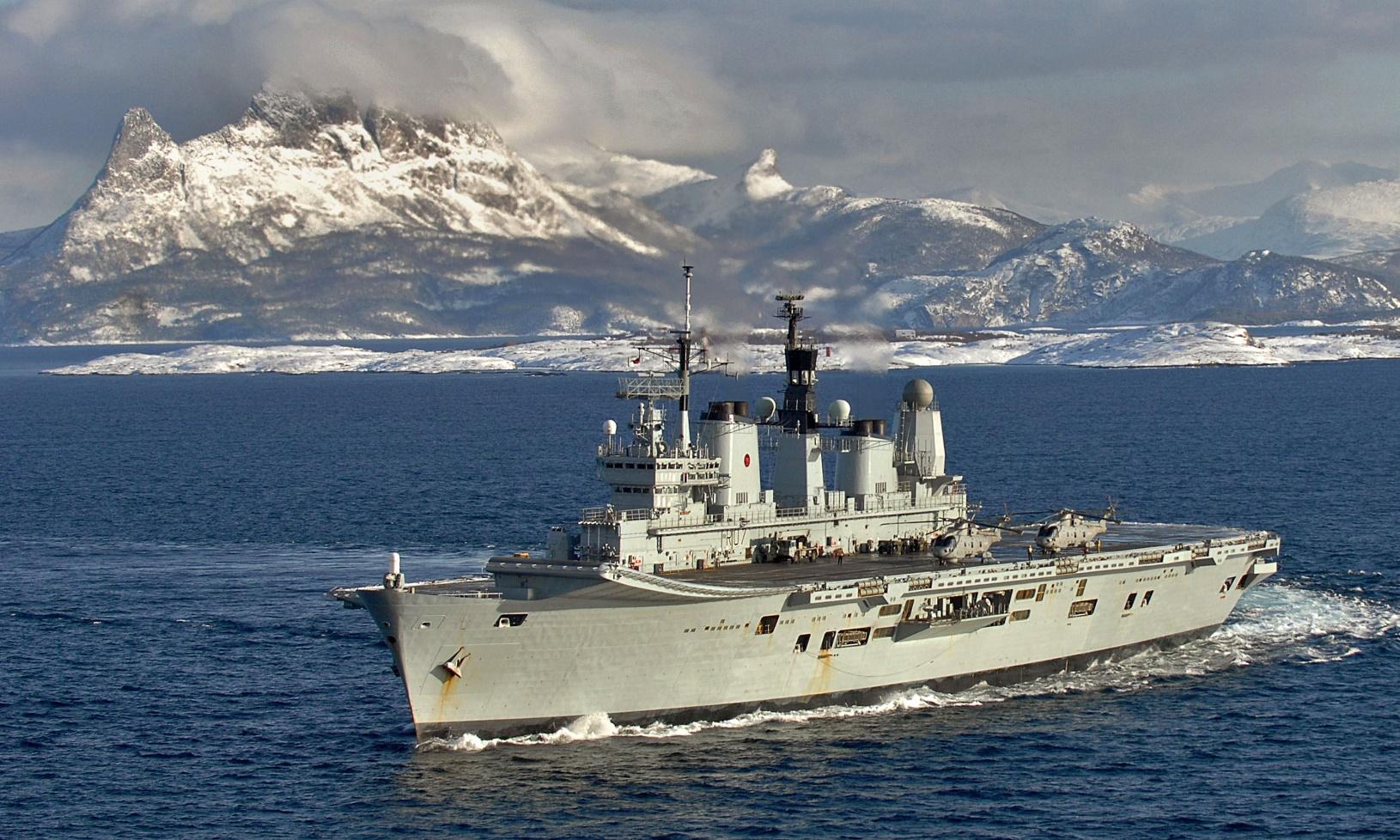
Propelled by 4 Olympus gas turbines (100,000 HP) and >30kots. Armed with Sea dart, Phalanx & 20 mm mtgs. Up to 18 Harriers with 4 Seakings, or variations. 1000 crew. Marvellous ships. A great pity we did not acquire one when it was offered by Margaret Thatcher, a lost opportunity.




